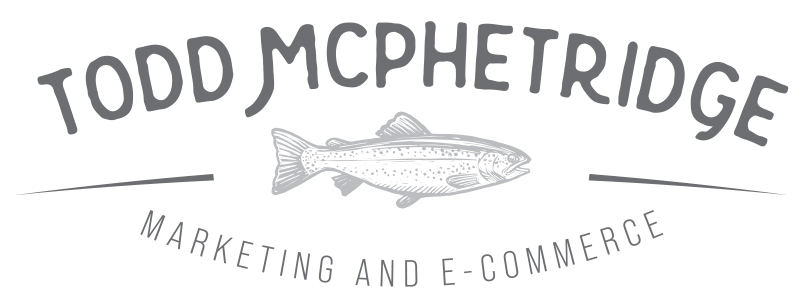DTC growth becomes predictable when leaders share one page of numbers that everyone understands the same way. The operating scorecard is that page. It translates strategy into a handful of metrics, clear definitions, and simple decision rules that finance, marketing, product, and operations can trust. This guide lays out a practical, board-ready scorecard from a marketing consultant who has watched too many teams drown in dashboards that do not drive action.
What Makes a Scorecard Actionable
- Few numbers, tight definitions. Every metric has a plain English formula and a purpose. No duplicate views of the same idea.
- Decision alignment. Each metric points to one owner and one type of move leaders can make this week.
- Consistency over time. The same page repeats each month so trends are obvious and debates are short.
- Direct line to cash. If it does not affect contribution margin, payback, or inventory risk, it does not belong on page one.
The 12 Metrics That Run a DTC Business
Use these as a starting set. Replace only if your model truly requires it.
- Revenue by channel and total. Purpose: top-line sanity check.
- Contribution margin on first orders. Purpose: quality of revenue.
- Blended CAC across channels. Purpose: cost to acquire a customer in the real world.
- Payback period in days. Purpose: cash velocity and budget headroom.
- LTV to CAC at day 60 and day 90 by acquisition cohort. Purpose: durability of growth.
- Opt-in rate for email and SMS. Purpose: owned audience compounding.
- Conversion rate by entry intent: home, PDP, comparison, and content. Purpose: routing and page quality.
- AOV and attach rate on bundles or add-ons. Purpose: offer architecture health.
- Promo exposure percent. Purpose: margin safety and deal dependency.
- Prospecting share of paid social budget. Purpose: future demand creation.
- Return rate by category. Purpose: gross margin protection.
- Inventory coverage for top SKUs. Purpose: prevent wasted media and missed revenue.
Plain English Definitions
- Contribution margin (first order): revenue minus product cost, shipping subsidy, and variable processing on first purchases only.
- Blended CAC: total paid media plus attributable production and platform fees divided by new customers across channels.
- Payback period: days until cumulative contribution margin per acquired customer is greater than or equal to CAC.
- LTV to CAC: lifetime value measured at a fixed day threshold divided by CAC for the cohort acquired in a given week or month.
- Promo exposure: percent of orders influenced by discounts above the standard welcome incentive.
- Prospecting share: percent of paid social spend dedicated to net new audiences.
Scorecard Layout Leaders Will Read
Keep it to one page. Use the same sections each month so patterns stand out.
- Top line: revenue, contribution margin, blended CAC, payback period.
- Acquisition: spend and new customers by channel, prospecting share, opt-in rate.
- Conversion: entry intent conversion rates, AOV, attach rate.
- Margin safety: promo exposure, return rate, contribution by category.
- Cohorts: day 60 and day 90 LTV to CAC by channel of acquisition.
- Supply sanity: inventory coverage on the top five SKUs.
Artifacts That Keep the Scorecard Honest
- Metric dictionary. A short appendix with formulas and exclusions. Everyone uses the same math.
- Guardrail box. Two rows that show current status against agreed limits for CAC, payback, promo exposure, and prospecting share.
- Decision log. One paragraph that states what budget, offer, or creative decision was made because of last month’s numbers.
Decision Rules That Prevent Debates
Publish a simple truth table so the same metric wins the same argument every time.
| Decision | Primary Metric | Secondary Check | Rule |
|---|---|---|---|
| Increase or decrease paid social spend | Blended CAC vs guardrail | Prospecting share and payback | Spend up only if blended CAC is inside guardrail and prospecting share is healthy |
| Prioritize PDP or comparison content | Entry intent conversion | Opt-in rate and bounce | Invest where intent is high and conversion lags |
| Run a promotion | Contribution margin per order | Promo exposure trend | Proceed only if margin floor is safe and exposure stays under cap |
| Back a creator program | CAC and payback for whitelisted creator ads | Day 60 LTV to CAC | Creators must meet the same guardrails as brand ads |
Roles and Cadence
- Fractional CMO or marketing leader: owns the scorecard, definitions, and weekly decision memo.
- Analytics: publishes the metric dictionary and reconciles data sources.
- Finance: validates contribution math and payback boundaries.
- Channel owners: propose budget moves tied to scorecard signals.
Create a short weekly ritual. One page of numbers, one paragraph of decisions, and one owner per decision. End the meeting with budget shifts and assigned changes to offers, pages, or creative pillars.
How to Build the First Version in a Week
- Choose the 12 metrics. Start with the list above and delete anything that does not serve a decision you actually make.
- Write definitions. Two lines per metric with exact formula and exclusions.
- Assemble a minimal data flow. UTMs, purchase events, and a clean orders export are often enough to begin.
- Publish a one page draft. Avoid visual clutter. Use small tables and four charts at most.
- Run the first meeting. Make two real decisions based on the page. Improve only what was confusing.
Examples of Real Decisions
Example 1: High ROAS, Weak Payback
Platform ROAS rises but day 60 LTV to CAC is flat. The scorecard shows promo exposure climbing. Decision: cap broad remarketing frequency, pull back on deep incentives, and push comparison content to lift quality of acquisition.
Example 2: CAC Spike, Stable Conversion
Blended CAC jumps while entry intent conversion and AOV hold steady. Payback is still inside guardrail. Decision: maintain prospecting spend, refresh hooks, and tighten audience overlap. Do not slash budgets that are still within financial rules.
Example 3: Inventory Constraint
Top SKU dips below safe coverage. Decision: shift prospecting toward in-stock substitutes, pause creator whitelisting on low inventory items, and highlight bundles that relieve pressure without margin damage.
Design Principles for the Page
- Mobile first reading. Executives should scan the PDF on a phone and grasp the story in a minute.
- Contrast and hierarchy. Use consistent headings and tight spacing. Let numbers breathe.
- No vanity metrics. Impressions, likes, and watch time stay off page one unless tied to a decision rule.
- Comparables only. Always show current month, prior month, and the median of the last three months.
Common Failure Modes and Fixes
- Metric creep. Every team wants its favorite number. Fix: lock the list for a quarter and require a decision use case to add anything.
- Data brawls. Platform and analytics disagree. Fix: blended numbers win budget decisions, platform numbers guide creative moves.
- Pretty but useless. A beautiful dashboard with no decisions. Fix: add the decision log and name an owner for each move.
- Promo distortion. ROAS looks great while margin falls. Fix: place contribution next to ROAS and add the exposure cap to guardrails.
- Over-remarketing. Cheap wins now, higher CAC later. Fix: prospecting share target on the page with a hard floor.
FAQ for Executive Buyers
Why this scorecard instead of a full BI build
Because leaders need a decision tool, not a data museum. The one page becomes the spine of planning and budget shifts while a BI stack matures in the background.
How does a Fractional CMO use the page
To set guardrails, allocate spend, brief creative, and synchronize marketing with finance and merchandising. The page keeps everyone aligned on a few numbers that matter.
Will this work for subscription or marketplace-heavy mixes
Yes. Swap or add metrics that reflect your revenue mechanics, such as churn rate or marketplace take rate, while keeping the same discipline and decision rules.
Get Started Today
Leaders move faster when numbers are simple, comparable, and tied to decisions. If you want a scorecard that aligns finance and growth, I offer marketing services to implement:
- A 12-metric operating scorecard with plain English definitions
- Guardrails for CAC, payback, promo exposure, and prospecting share
- A weekly decision memo that turns data into budget moves
- Offer and page improvements tied to entry intent conversion
Book your strategy session and turn a single page into predictable revenue.

















